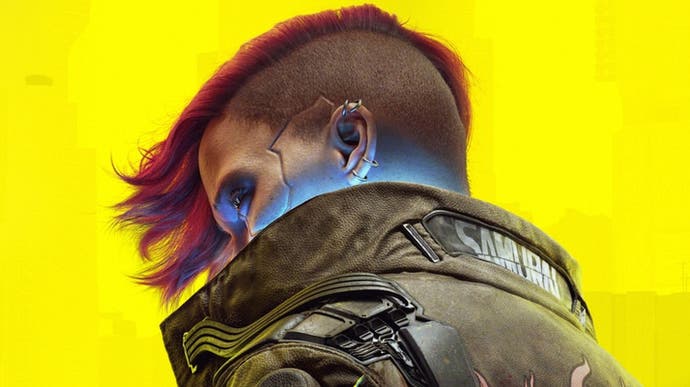Cyberpunk 2077's next-gen patch tested on PS5 and Xbox Series consoles
The Digital Foundry verdict.
Welcome back to Cyberpunk 2077, a game transformed for PlayStation 5 and Xbox Series consoles. The prior 'back-compat plus' versions of the game yield to a brand-new rendition based on current-gen SDKs, allowing CD Projekt RED to fully tap into the capabilities of the new wave of consoles. This is a game with a troubled history and this new 1.5 upgrade delivers both 30fps ray tracing and an enhanced 60fps performance mode, combined with other current-gen improvements such as improved loading times - but how much of an upgrade do users actually get?
First up, it's worth addressing the elephant in the room: Xbox Series S. There's no dressing this one up, the junior Xbox has no graphics toggle at all and is set to simply run at a dynamic 1440p, at 30 frames per second. In pixel counts that's actually a range of between 2304x1296, up to 2560x1440 based on my testing. Purely on a surface level here it's a shame to see it miss out on a 60fps mode (CDPR says it's investigating adding it) but equally, no ray tracing features are enabled either. Still, the overall quality of life improvements on patch 1.50 do make Cyberpunk more playable - just don't expect any revolutionary boosts to its visuals in this case. For that, we have to turn back to PS5 and Series X, where for the first time on console, ray traced shadows are enabled, working in combination with improved screen-space reflections.
Despite talk of 4K, our tests strongly suggest that the RT modes on both consoles render at a native 1440p. Dynamic resolution scaling may be in effect, but all results on all consoles deliver the same value in every scenario - which raises the question: what does RT actually do? Outdoors, the impact of RT shadows is fairly muted to the point where even in direct head-to-head comparisons, you may have trouble noticing the difference between the quality and performance modes. Indoors, it's a different ball game, where sharp directional lighting can really demonstrate the upgrade. RT produces more realistic shadows, following the real-world logic where the further an object is from the light source, the more diffuse the outline becomes. The same goes for vehicle barriers, small items around V's apartment and even the pillows on their bed. The effect is often subtle. In select spots though, shadows fully envelope a scene to create an obviously richer, deeper image.
But ray-traced shadows are where the upgrades in ray-tracing settings end on console. Ray traced reflections look phenomenal in the PC version of the game, though sadly they're not present on PS5 or Series X, while their ambient occlusion method similarly remains the same. All told then, placing PS5 and Series X in RT mode alongside Series S's standard non-RT presentation, all are offering a 1440p30 outlook and all look very similar, with RT only manifesting in an impactful way in select indoor areas. Elsewhere, the upgrade is less apparent on Night City's streets. Textures, effects and draw distance on geometry are all are matched between the three in driving sequences. Meanwhile reflections are improved on the two more powerful machines - using a higher-grade screen-space technique - but beyond that it's a very similar presentation on each platform. Even crowd density on Series S holds up convincingly next to the other two.
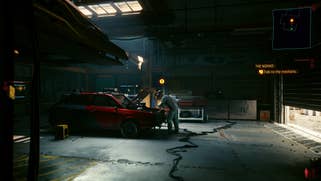
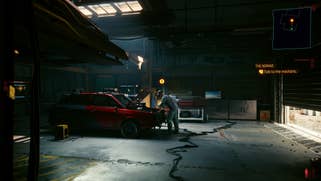
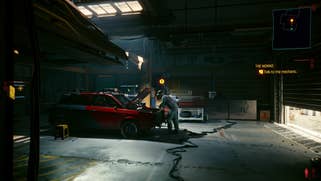









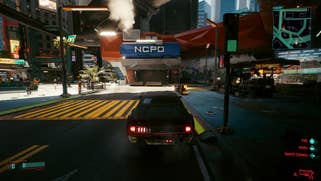
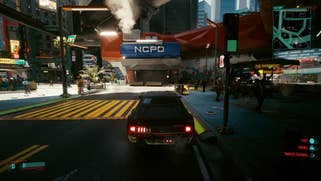
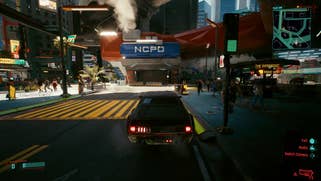
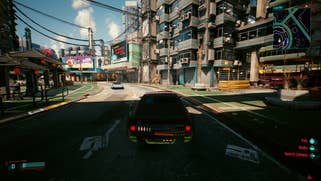
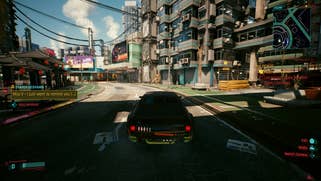

Performance across Series consoles and PS5 in their respective 30fps modes is fairly straightforward to assess. Barring occasional hitches and one-off tearing at the top of the screen, frame-rate is a mostly consistent 30 frames per second. The only real issue with this mode is general input latency being far too high, making it harder to aim or drive than the 60FPS mode. Ultimately, the RT mode does the job if you're really interested in RT shadows, but up against the 60fps performance mode, it's difficult not to come to the conclusion that this is an interesting experiment, and ultimately not the way this game should be played.
Performance mode is where it's at, promising to run at 60fps with a dynamic 4K resolution on both consoles. CDPR openly states on its spec sheet that small, rare frame-rate drops might be on show - which, is certainly true. Patched to 1.50, PlayStation 5 now seems to operate in a 1260p to 1728p dynamic resolution window - a respectable turn-out for a challenging game gunning for 60fps. It may not be 4K, but image quality gets a huge upgrade compared to the pre-patch results on PS5 - which came in between 972p and 1200p. Xbox Series X is also dramatically improved, with a 1382p to 1782p DRS window looking sharper and cleaner compared to the old version's 1080p to 1296p range. Series X enjoys an overall lead in resolution, but ultimately, with CDPR's temporal anti-aliasing solution in play, it's hard to see much difference between these two consoles. The big takeaway is the comparison with the older versions of the game - this is cleaner, crisper and more impressive overall.
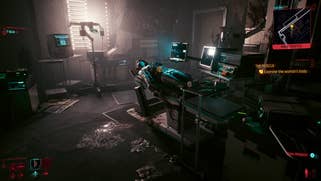
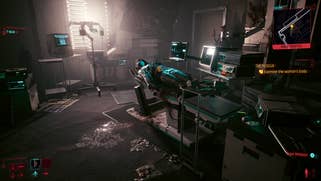




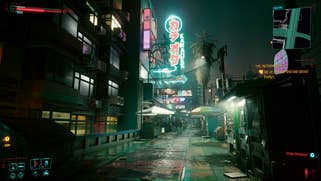

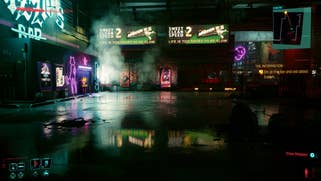



Actual performance isn't always quite as solid as you may hope, however. For example, perhaps owing to its basis on the last-gen codebase, the older PlayStation 5 rendition of Cyberpunk 2077 had crowd density issues. NPCs were sparse on PS5, leading to an empty-looking city. This has been addressed in the new 1.5 build (on top of the big boost to resolution) but it also means that performance can be lower than the last-gen PS4 app played on PS5. Around the market it amounts to a substantial drop into the high 40fps region - with occasional screen-tearing - compared to a near locked 60fps on the older version. There is good news, however. Outside of densely packed areas like the market, performance is generally higher - even in our trusty alley shoot-out benchmark, which historically hit performance hard. Ultimately, improvements to resolution and density in combination with a general increase to stability make this mode a winner on PS5.
Moving over to Series X, there's an even bigger level of improvement. Actually, Series X had worse performance than PS5 overall on patch 1.23 - perhaps down to higher resolution and improved crowd density. As the video on this page demonstrates, patch 1.5 boosts the game's level of performance in all areas, with key stress points running better than ever. The alley shoot-out still causes challenges, but overall, the game runs very well.
Both Series X and PS5 impress then, but which delivers the most sustained 60fps experience? It's worth stressing that both consoles are largely tied, locked to the 60fps line in almost every test, every scene. But if we're to push the engine hard to find the divide, PS5 is the console that wins out. For example, the taxing market run runs 5-10fps to the better on the Sony machine. PS5 also runs more fluidly in the stress point driving past Tom's Diner, and in the alley shoot-out test that follows it. However, this isn't exactly representative of most of play. For the most part you'll be seeing a 60fps update on both machines - and crucially, Xbox Series X's VRR support does a phenomenal job of masking the performance drops the console does have.
CD Projekt RED also discussed loading time improvements and the good news is that 1.5 is much better optimised to take advantage of its SSD bandwidth now. It drastically improves loading times over the last patch, in reloading your last checkpoint or save. I chose to load a save that takes us into the alley area, ahead of the market. The new patch on PS5 gets us there in just 13 seconds, while previously we had to wait a whole 44 seconds to get to the same point. This puts PS5 on par with Xbox Series consoles, where previously it loaded a lot more slowly.
Overall, patch 1.50 is a dramatic improvement for PlayStation 5 and Xbox Series consoles - there's an overall boost to performance, resolution and overall stability but we're still some way short of the majesty of the fully-enabled PC experience and the RT features are somewhat underwhelming, not justifying the drop in frame-rate. Series S lacking a 60fps mode and ray-tracing is also a disappointment.
But to my mind, Cyberpunk's latest patch does one great thing: it creates a more stable base to build on for future updates and patches. The bug fixes are plentiful and CDPR is slowly chiselling away at its work to define it and to remove its blemishes. I've experienced no crashes and no soft locks in my testing, which is a start. Performance has never been better, and at least PS5 and Series X are standardised in their options, their ray-traced shadows, and crowd density. Beyond this, we'll have to wait on further patches. For now, Cyberpunk 2077 is arguably in the position it should have been at launch well over a year ago. For those tempted to replay the game to see its next-gen features, there's no show-stopping moment - but for newcomers? There's never been a better time to experience the game on console.
